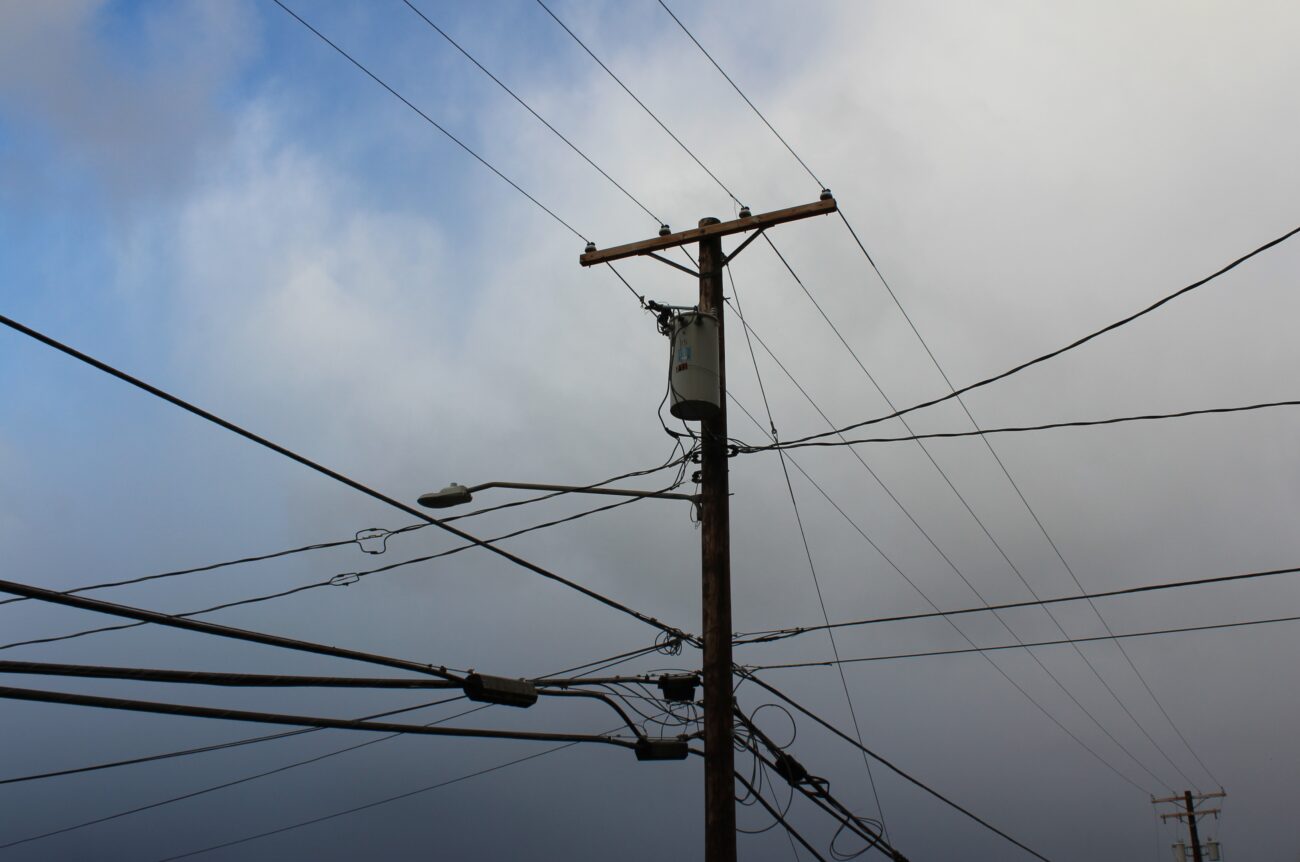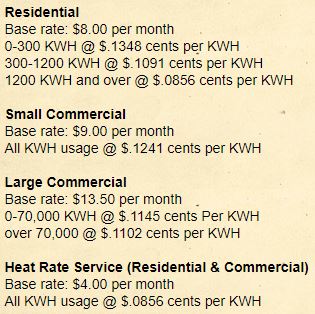
(Sage Smiley / KSTK)
Electricity prices in Wrangell may go up a penny per kilowatt-hour. For homeowners, that most likely means a 6% to 7% increase to monthly bills.
Wrangell’s electric bills are calculated with a base price of $8.00 for residential customers, and then tiered prices based on the number of kilowatt-hours used. Commercial rates are calculated similarly, with a set base rate and a charge per kilowatt-hour.

(Screenshot from Wrangell.com)
The proposed Wrangell electrical rate hike is in response to the wholesale price set by Southeast Alaska Power Agency (SEAPA) recently going up. SEAPA provides hydropower to Wrangell, Ketchikan and Petersburg.
Wrangell Mayor Steve Prysunka also sits on the SEAPA board. He says the wholesale rate increase – SEAPA’s first in more than two decades – was needed to pay for infrastructure upgrades.
“We were a little bit shocked when we replaced the cable going across from Mitkof [Island] to Vank [Island]. It was $13 or $14 million,” Prysunka explained. “Luckily, we had some insurance for failure on that one. But we have to start replacing and getting prepared to replace – the actual infrastructure is just aging out and we’ve got to be prepared. We can’t wait until it happens and then try to deal with it.”
Prysunka told the assembly that by the SEAPA board’s calculations, the quarter-cent wholesale increase would raise monthly electric bills of an average household by $3 to $5.
Wrangell’s city administration had initially proposed a quarter of a cent rate increase locally, paralleling SEAPA’s increase.
But during borough assembly discussions on Tuesday (December 14), assembly member Dave Powell pointed out that Wrangell has its own expenses. He said he was concerned that a quarter-penny increase in local electrical rates wouldn’t be enough.
“To me,” Powell said, “It seems like what we’re doing is we’re going along with what SEAPA says and just adjusting our rate for what they did. Don’t get me wrong, I never want to pay more than anybody else, but we’ve always talked about our electrical – we don’t have enough money to replace certain things. We’re not keeping up to what the cost is and all that stuff. Why are we only looking at a quarter of a penny? Why are we not looking at one penny right now?”
Other assembly members agreed, and Wrangell’s assembly gave initial approval at its Tuesday meeting for a one-cent per kilowatt-hour increase: a quarter-cent to cover the SEAPA increase, and three-quarters of a cent for local electrical funds.
Yet assembly member Patty Gilbert questioned raising the electrical rate without considering Wrangell’s other utilities.
“I don’t disagree with doing an increase,” Gilbert explained, “But we have other utilities that come into play and might need a rate increase. Can we take some time at the beginning of next year to explore that?”
Powell responded he believed this was a time for action.
“I know we are going to be looking at that,” Powell responded, “I know those rates are gonna have to go up somewhere along the line. I just think that we can’t keep kicking this can down the line, we do that every time.”
Prysunka added that SEAPA may raise its wholesale rates again next year. And it might be good not to have to come back to ratepayers again.
“If the community keeps getting hit with rate increases – a quarter-cent now, even though it’s fractional, and then if you come back in a month or two months time and say now we want to raise it three-quarters of a cent it feels worse than it’s one penny now and we go down the road later,” he said.
It’s been a decade since Wrangell commissioned a rate study to calculate how much it should charge to pay for its electrical grid, and the last time Wrangell’s assembly raised electrical rates was a 7% hike in 2014.
Wrangell’s assembly will hold a public hearing on the proposed rate increase at its January 11 meeting. If approved, it would go into effect on February 1.
12/16: This post has been updated to add a photo of Wrangell’s current electrical rates.
Get in touch with KSTK at news@kstk.org or (907) 874-2345.












